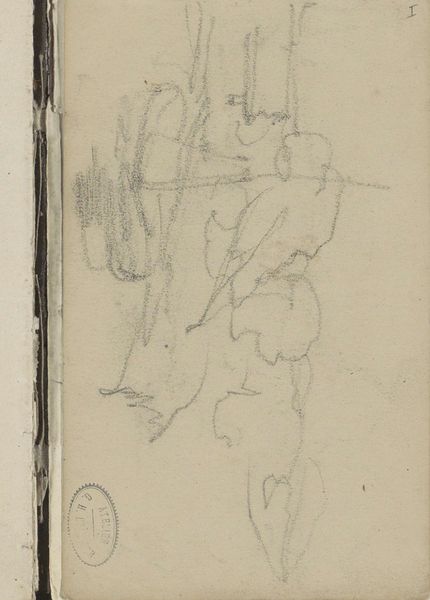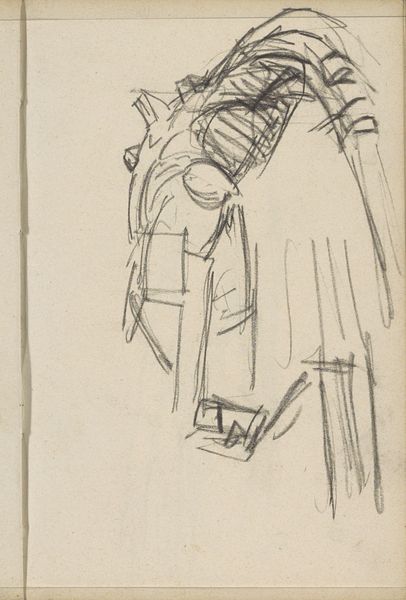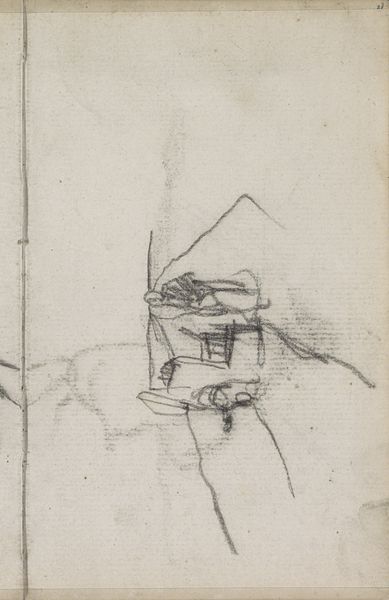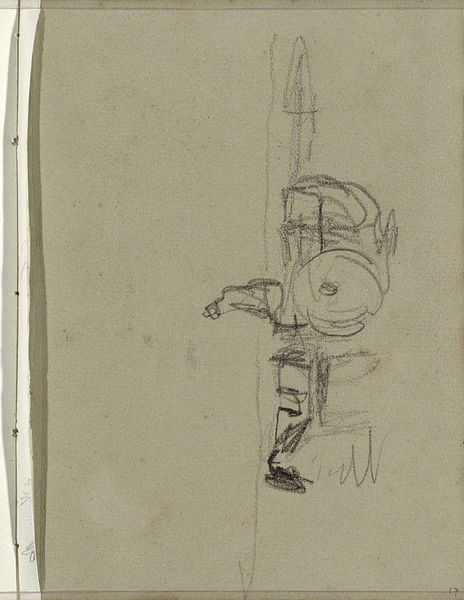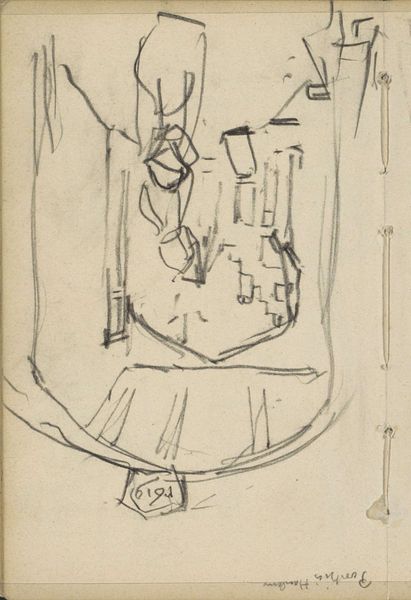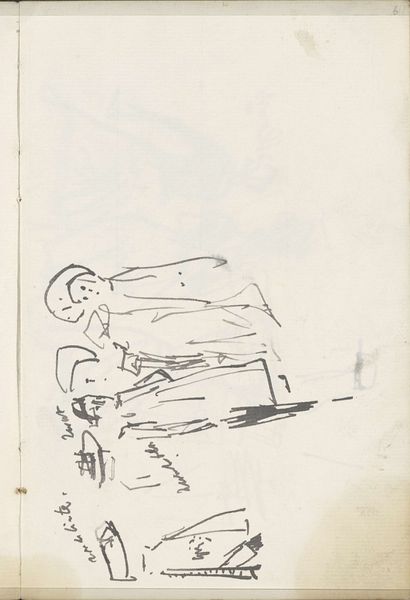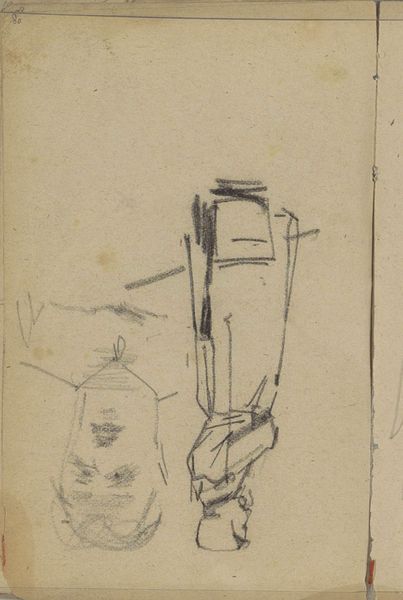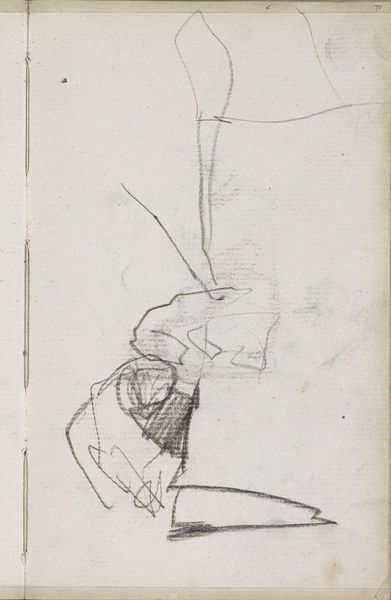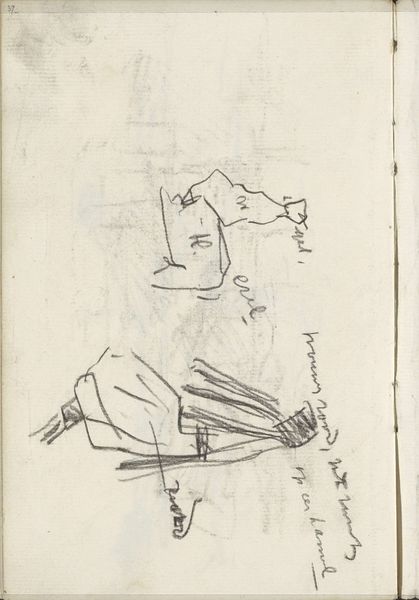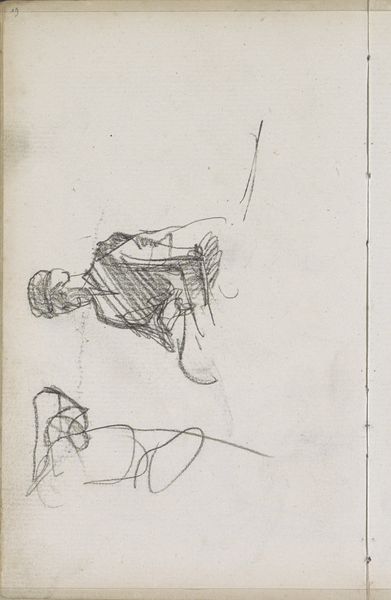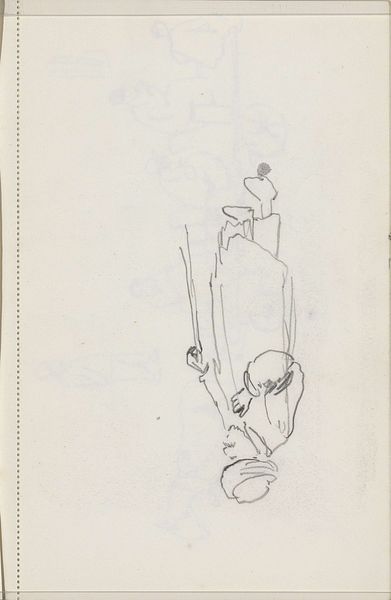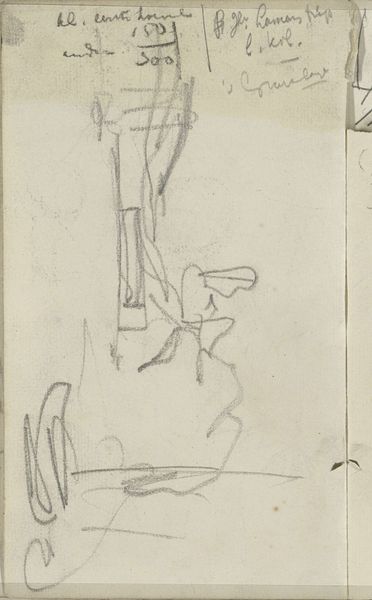
drawing, graphite
#
drawing
#
impressionism
#
pen sketch
#
landscape
#
personal sketchbook
#
idea generation sketch
#
sketchwork
#
ink drawing experimentation
#
pen-ink sketch
#
line
#
graphite
#
sketchbook drawing
#
storyboard and sketchbook work
#
sketchbook art
#
realism
#
initial sketch
Copyright: Rijks Museum: Open Domain
Curator: We're looking at "Cart and Plough in a Landscape" by George Hendrik Breitner, dating from between 1884 and 1886. It's currently held at the Rijksmuseum. Editor: Immediately, I see this as a study in contrast—a starkness amidst an otherwise open field. The lines are so economical, but convey so much information about form and mass. Curator: Indeed. As a work on paper using graphite and pen, the line itself is doing a lot of work. It really demonstrates Breitner’s commitment to capturing the fleeting moment, the immediacy of his experience of the landscape. He worked en plein air quite a bit, so these rapid sketches are a way of documenting his observations directly. Editor: Precisely. There’s something raw about the marks, almost as if they are purely functional—devoid of expressive flourishes, yet somehow charged with emotion. It reflects a realism born not from meticulous rendering but rather from an honest grappling with the act of seeing. Curator: It’s also indicative of a shift happening within Dutch art at the time. Moving away from idealized pastoral scenes towards a more direct engagement with the everyday lives of those working the land. It embodies the rising socialist sentiments. The humble cart and plough are rendered monumental in their stark isolation. Editor: Good point. It shows how simple shapes create rhythm. We tend to look at the empty space, and yet there's structure and depth within those simple strokes that echo even today. It’s as if Breitner anticipated minimalism without the aesthetic distancing so commonly seen in contemporary practices. Curator: It forces a confrontation with our own gaze and our expectations of what constitutes a “finished” work. Are these quick marks not a complete thought, rendered visible? It's compelling. Editor: It’s like catching a fleeting glimpse into the artist's own thought process. Perhaps we've glimpsed more here than initially met the eye. Curator: Yes. Seeing this today only deepens our understanding of visual structure itself, doesn't it?
Comments
No comments
Be the first to comment and join the conversation on the ultimate creative platform.

